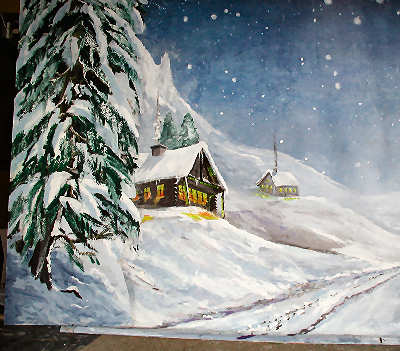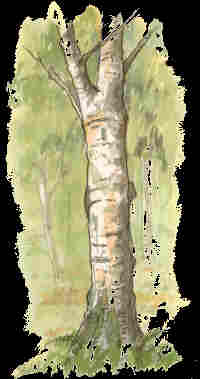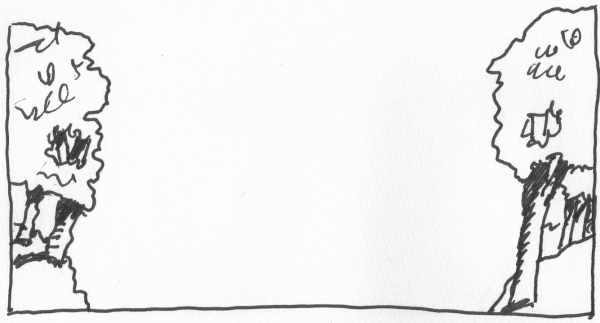TREES - Page two
How I go about painting trees and forests on Backcloths; Flats and Wings.
For the purposes of painting scenery. I put trees into three categories. These are my categories and not based on any official species list:-
- Oaks,
- Firs,
- and Silver Birch.
I shall ignore the exotics here such as Palms, Jungles, Strangler Vines etc.
Each of these three groups have different shaped trunks branches, barks, roots and foliage.


FIRS
I paint the trunk a dark brown with vertical short lines to represent the bark.
Hard to see in this scene.
SILVER BIRCH
I like painting Silver Birch as the bracelet shading helps to show the roundness and perspective of the trunks and branches.
Bracelet shading are lines which circle the cylinders of trunks and branches.

LIE OF THE LAND
I always imagine the stage to be a flat dell or clearing in the wood, so usually plan the land of my forest to sweep down to the stage. So if I'm painting trees on wings the offstage side of the wing will be higher than the on stage side.

There's different fauna around the base of different trunks and this depends upon the season too. Toadstools; grass; bluebells; snowdrops and so forth.
Then there are the angled shapes such as leaning trees, rotten fallen logs etc. These angles give life and interest to what could be a sterile scene. The beauty of painting a woods is that you are in charge (Unlike, say, a building) so you can decide the angle and positioning of these elements so that they make a nice composition.